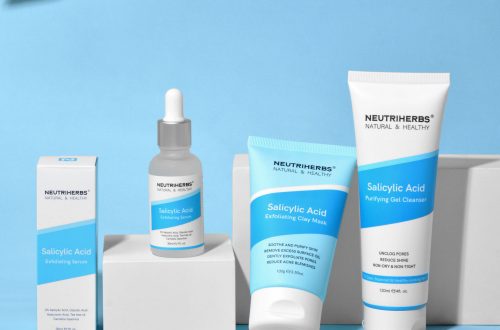
What distinguishes retinoids from retinol?
Both retinoids and retinol are potent skincare ingredients used to treat wrinkles and acne. Although retinoids, which include retinol, are a subset, the words have different connotations when they appear on a skincare label. What you need to know about the distinctions between retinol and retinoids is provided below. To put it another way, not all retinoids are retinoids, even if they are all retinoids.
How do retinoids work?
A class of substances called retinoids is generated from vitamin A. Retinoids are transformed into retinoic acid, the active component that has the best track record for reversing and preventing wrinkles, discolouration, and other sun-related ageing symptoms.
They also possess potent anti-acne abilities. They work by quickening the skin’s natural renewal process and boosting the synthesis of blood vessels, collagen, and hyaluronic acid. The class of compounds that can be treated with both over-the-counter and prescription medications is known as retinoids.
The name “retinoid” covers a variety of formulations, which are typically divided into 4 generations, or groups.
Some of the most popular retinoids, such as retinol, tretinoin, and isotretinoin, are found in first-generation non-aromatic retinoids. The oral retinoid acitretin, which is used to treat psoriasis, is a member of the second generation of monoaromatic retinoids.
Polyaromatics, or third-generation retinoids, are well recognised for the well-known over-the-counter acne drug adapalene. Trifarotene, the first retinoid of the fourth generation, is used to treat acne.
Adapalene, tretinoin, and tazarotene, which are all pure retinoic acids, are the most potent retinoids and may only be obtained with a prescription. Retinoids encourage the top layer of skin to exfoliate aged skin cells more quickly, which is how they operate.
By limiting the accumulation of dead skin cells within the pores, acne is avoided. By boosting collagen formation, retinoids also strengthen and revitalise the skin’s deeper layers, helping to reduce the appearance of some sun-related ageing symptoms like fine lines and wrinkles.
Retinol: what is it?
Retinol, a first-generation retinoid with many of the same characteristics as the others listed above, was previously noted. One of the key differences between retinol and other retinoids is that retinol is relatively mild (owing to lower amounts of the active ingredient retinoic acid) and so is present in many over-the-counter formulations, whereas the majority of other retinoids require a prescription.
Retinol functions similarly to other retinoids by entering beneath the skin’s surface, where it stimulates the synthesis of collagen and elastin. By minimising wrinkles and fine lines, these two proteins assist in maintaining the appearance of healthy skin. Retinol also promotes rapid cell turnover rates, which prevents the accumulation of surface skin cells at or near the pores.
- Retinoids and retinol treat what conditions?
- Although retinoids are frequently recommended to treat acne, they can also aid in the treatment of a number of other issues, including:
- wrinkles and acne scars
- sun fading
- Ruggedness, many pores
- Melasma or uneven skin pigmentation





